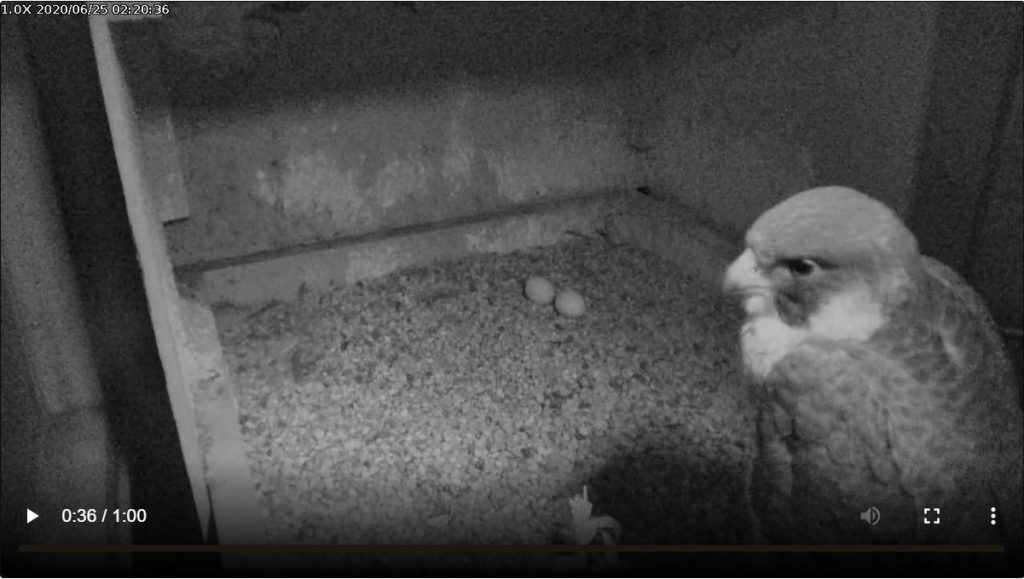
26 June 2020
It’s late June, the solstice has passed, and yet three Cathedral of Learning peregrines are courting and the female Morela spent most of Wednesday-Thursday night at the nest.
Female peregrines normally spend the night at the nest before egg laying. Don’t get your hopes up, though. It’s too late in the year for successful eggs.
On 25 June over a period of 9 hours Morela courted with suitors four times, twice with each male, Ecco then Terzo. Click on links on these images and captions to see video of each event.
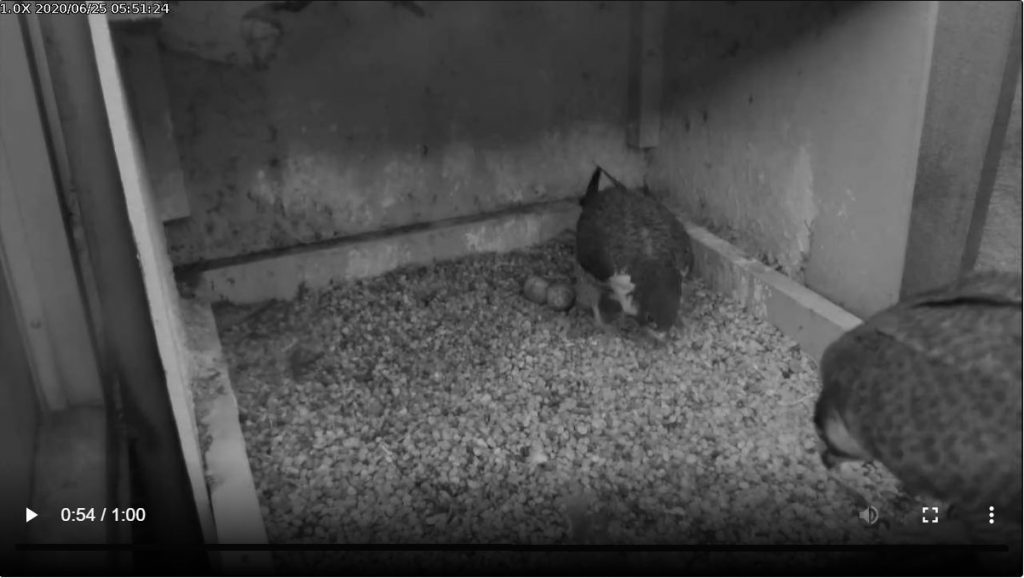
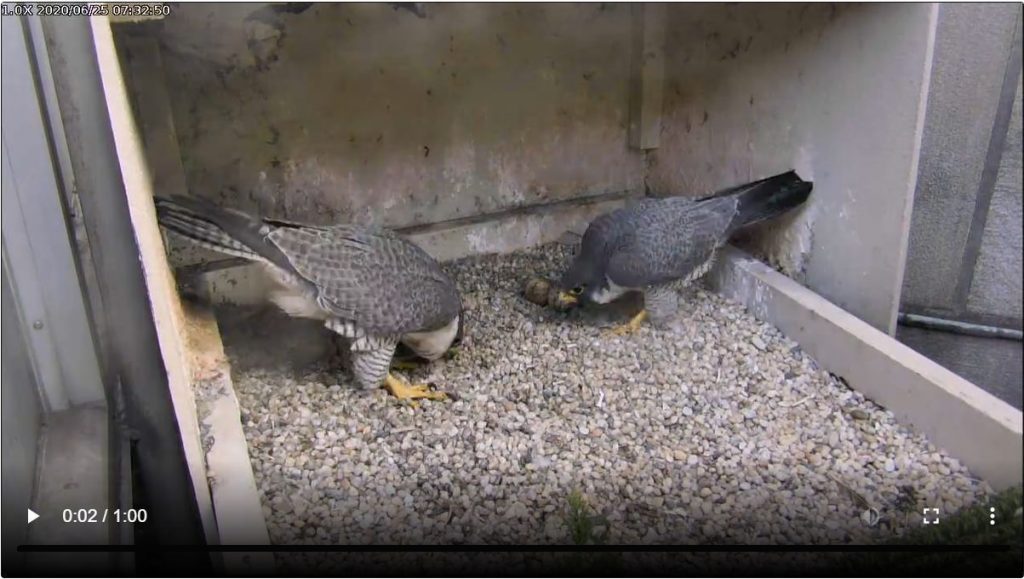
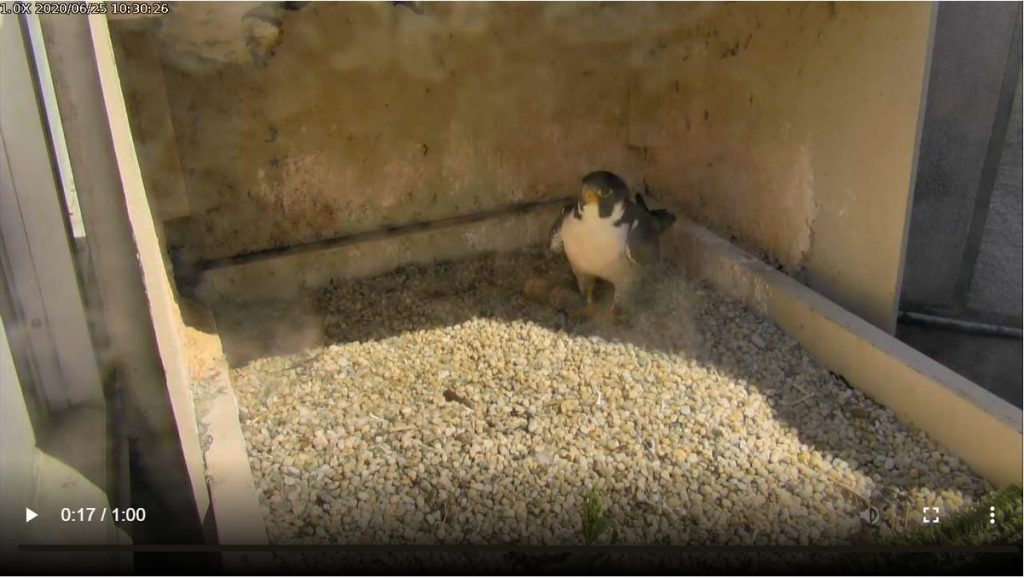
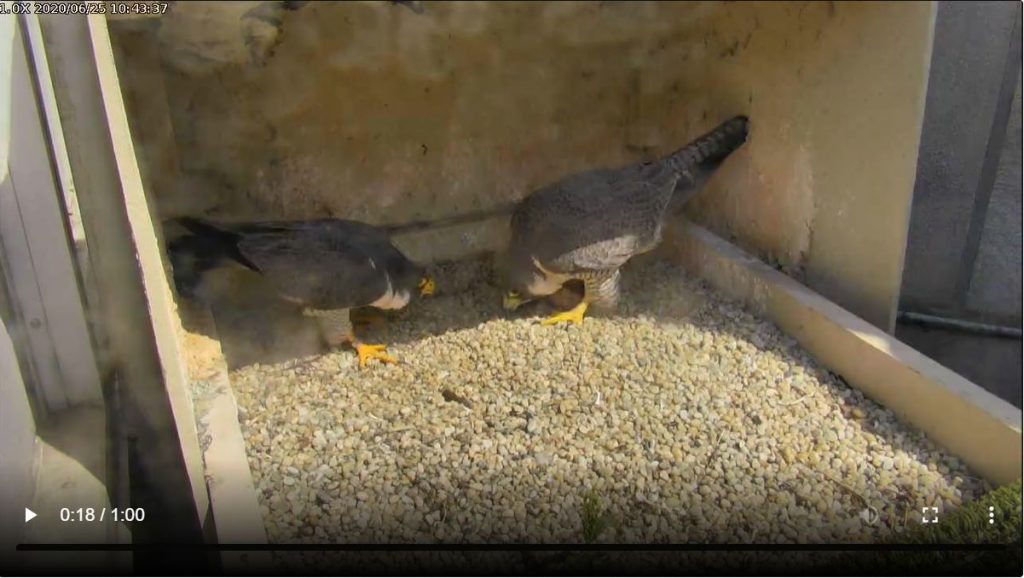
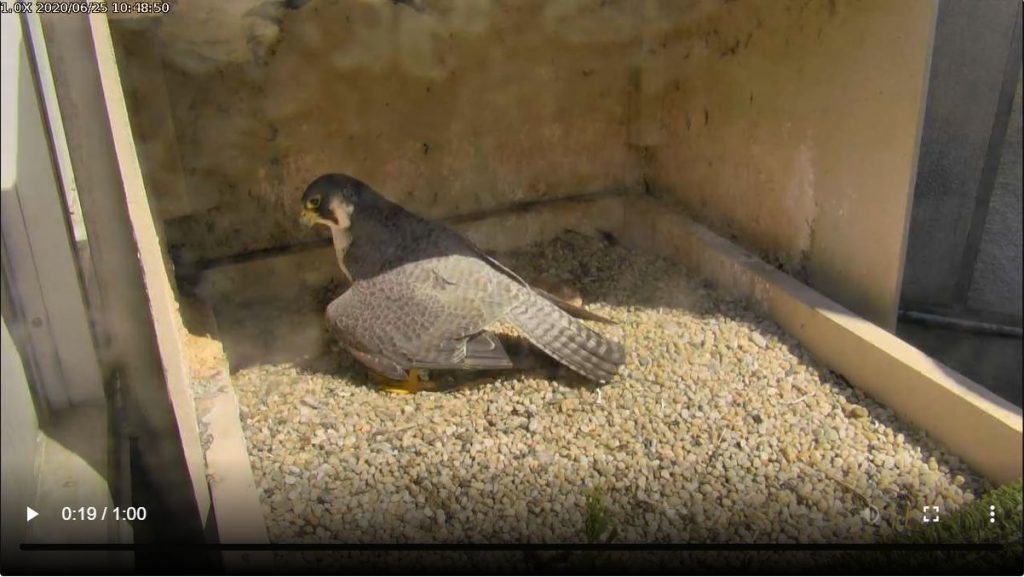
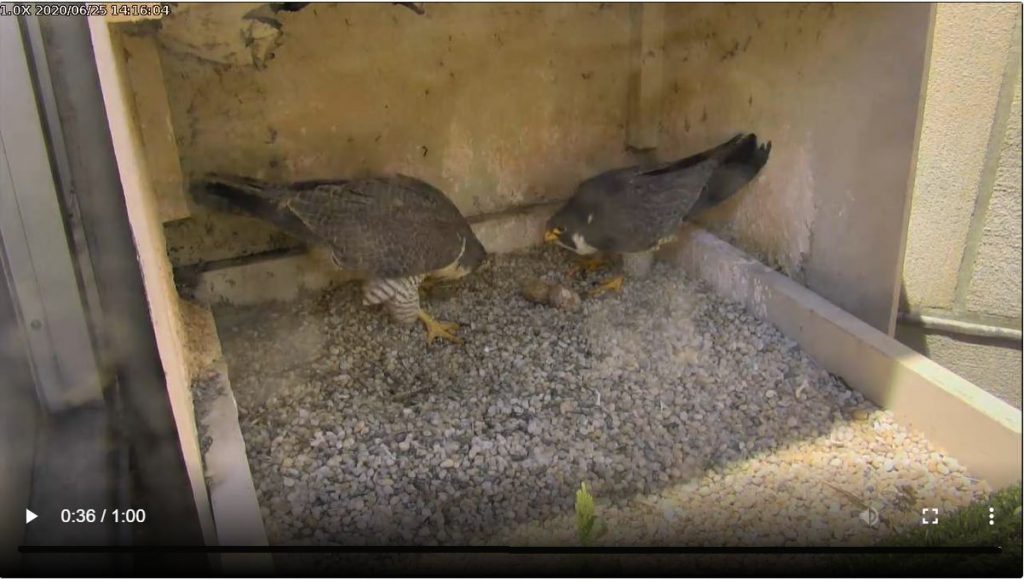
Here’s a quick video summary: Day in a Minute, 25 June 2020 7am to 7pm.
After a long failed nesting season, the peregrine soap opera continues at Cathedral of Learning. Is Morela enjoying all the attention? You’d think it was March.
(photos and videos from the National Aviary falconcam at Univ of Pittsburgh)
Morela is a little hussy. BUT boys will be boys.
Nan, I am completely with you on this one. While thinking of titles for this morning’s blog I momentarily considered, “Morela, You Slut” (remembering Saturday Night Live) but I decided it was not in good taste. 😉
“Boys will be boys”, but Morela is a slut? What sexism. Lol
This still reminds me of the Bald Eagle nest located at “Stewards of the Upper Mississippi” which consists of 2 males and 1 female. Both males mate with the female and all 3 take care of the eaglets. This has been going on for years and has been very successful, even though it is a very unusual situation for Bald Eagles.
Where do Falcons mate? Does anyone know if she has mated with both of them. No one seems to know who was responsible for the 2 eggs in the nest.
Mary, the peregrines mate on the parapets of the cliff/building. Though they do this in full sight they are so far up that we don’t usually notice. Also, because of COVID-19, no one was in the building or on campus to look out a window or up from the ground to see it.
Kate, your reply to Nan just gave me a huge chuckle. 🙂
It gave me one too, for sure!!
While we don’t have chicks to watch, we do have the menage a trois to keep up interest in the nest. Not as satisfying, for sure, but pretty interesting. How long this will last, who knows.
At 2:37, I tuned in and found Terzo alone in the nest. How long he’d been there, I don’t know. He didn’t stay long after that.
Why is it too late for nesting? Eggs need cooler weather? Chicks will get heat stroke?
Kathy, peregrine egg incubation is 32 days and then another 38 to 45 days until they fly. Then they have to learn how to be self sufficient. They reach that stage & leave home in July or August (at this latitude) at a time when there are plenty of young birds (prey) to eat as they start out their independent lives. At this point there is not enough time to get all that done.
Interestingly, peregrine hormones are tuned to this cycle: They hatch eggs during spring migration when lots of prey is migrating through. Their young become independent / migrate when there’s lots of prey around and it’s easier to find food. That’s why they lay eggs in March in the mid-latitudes.